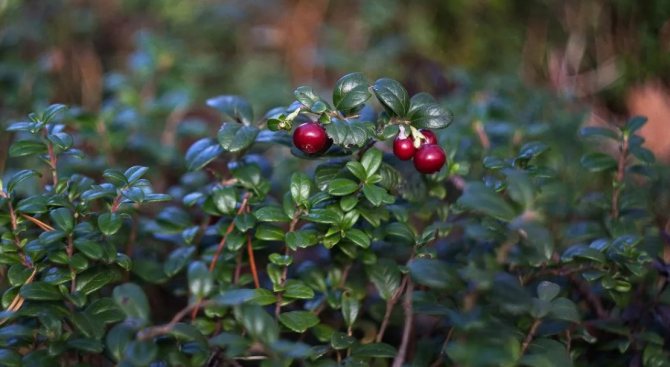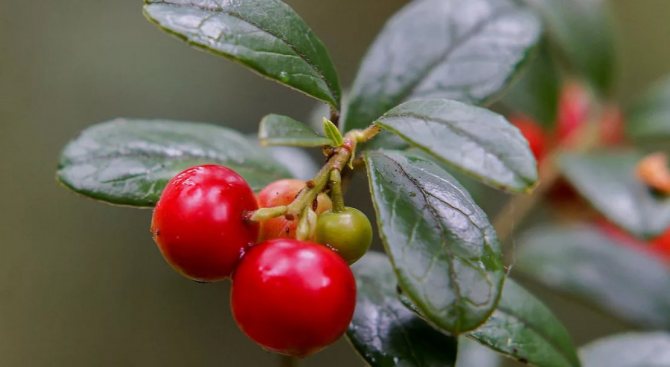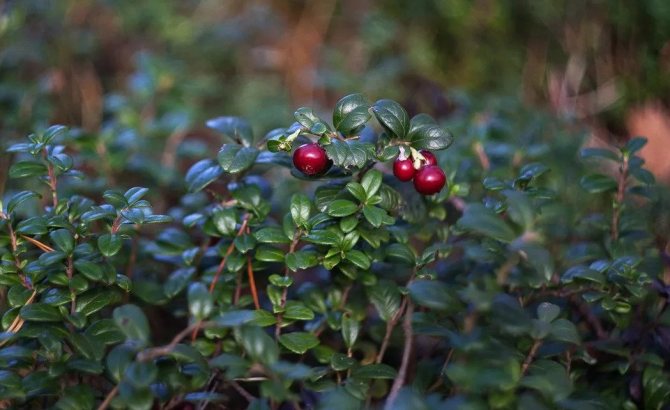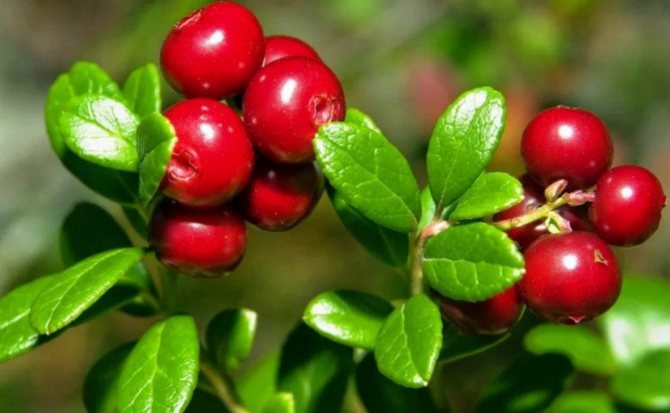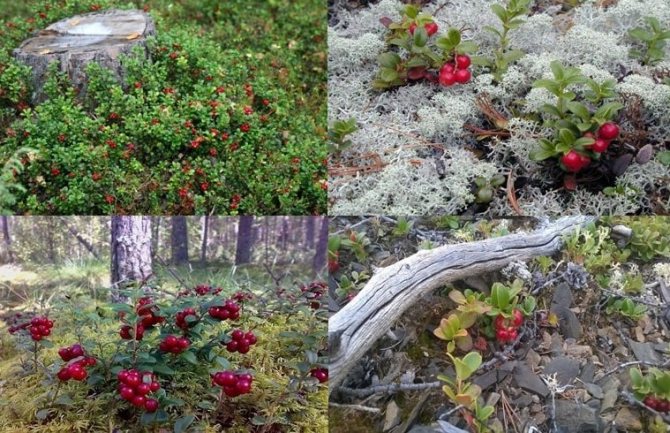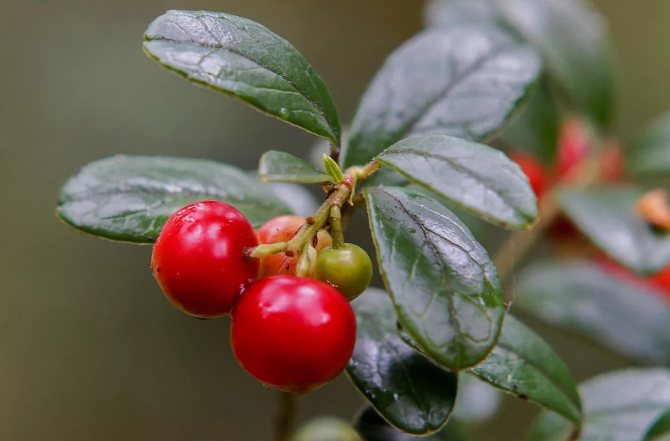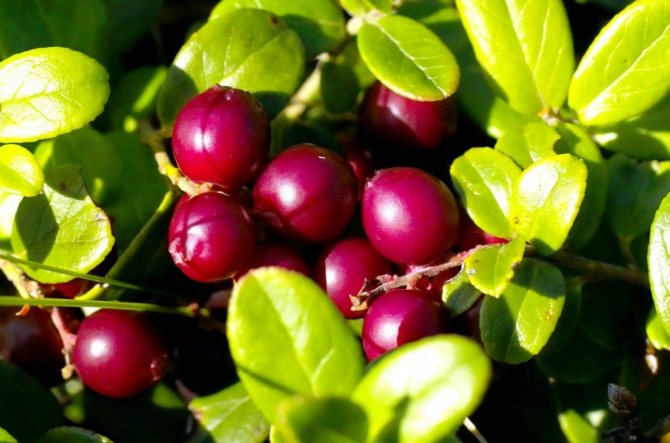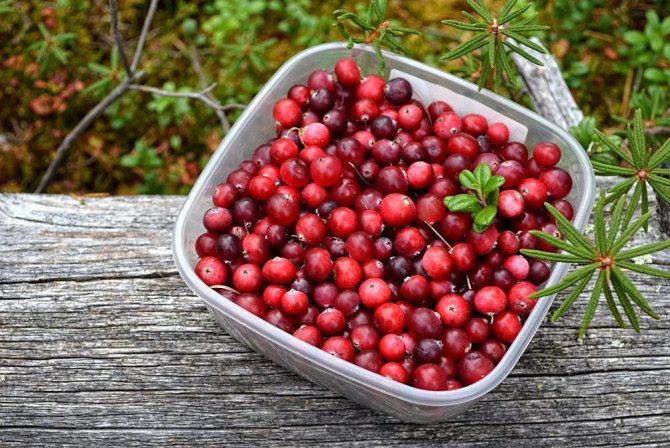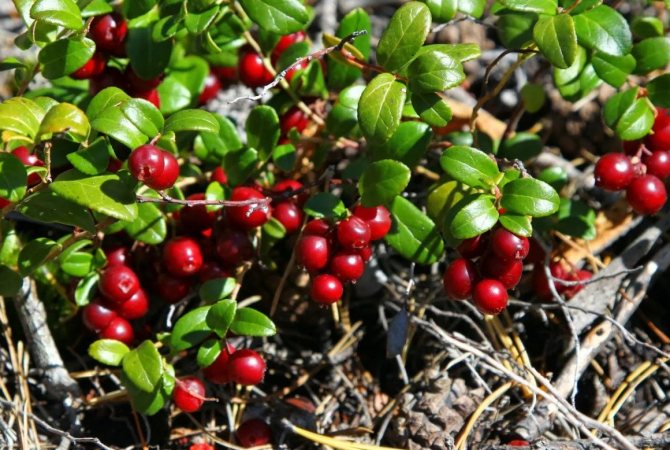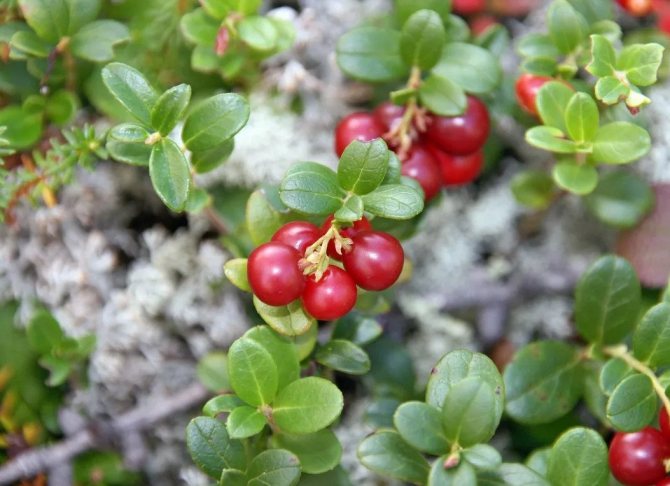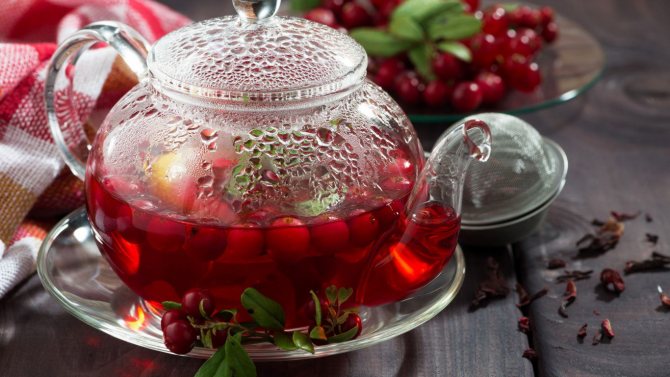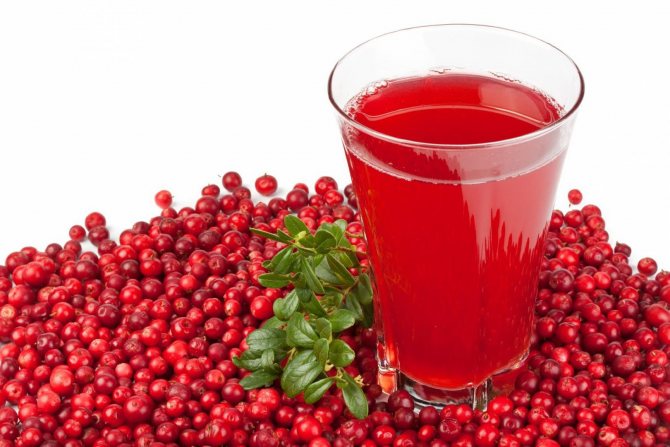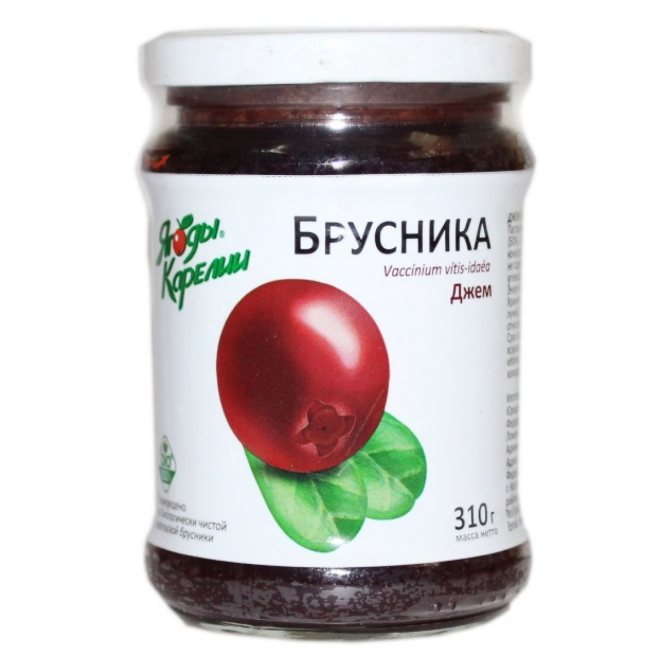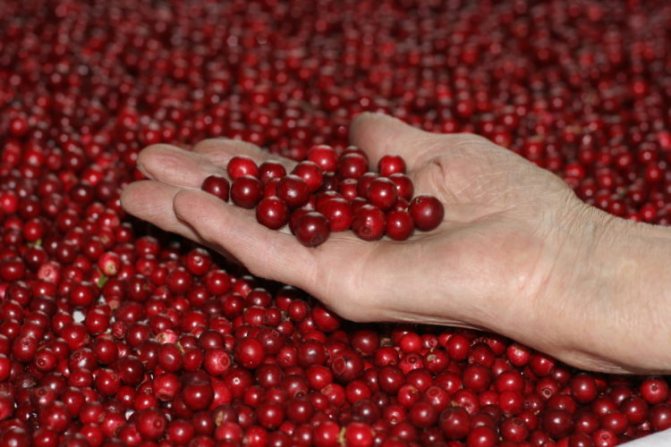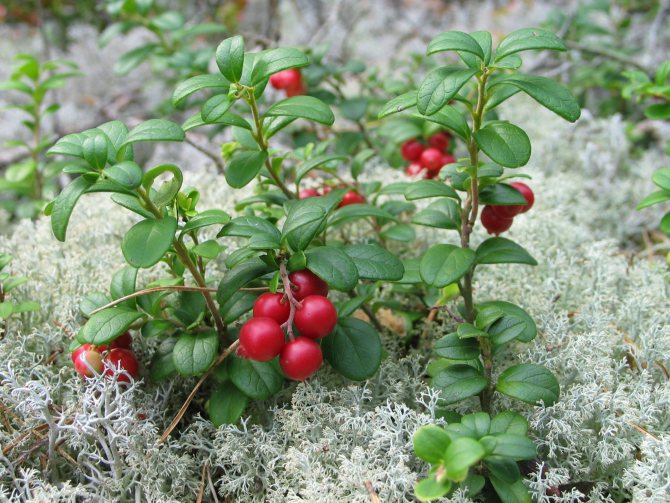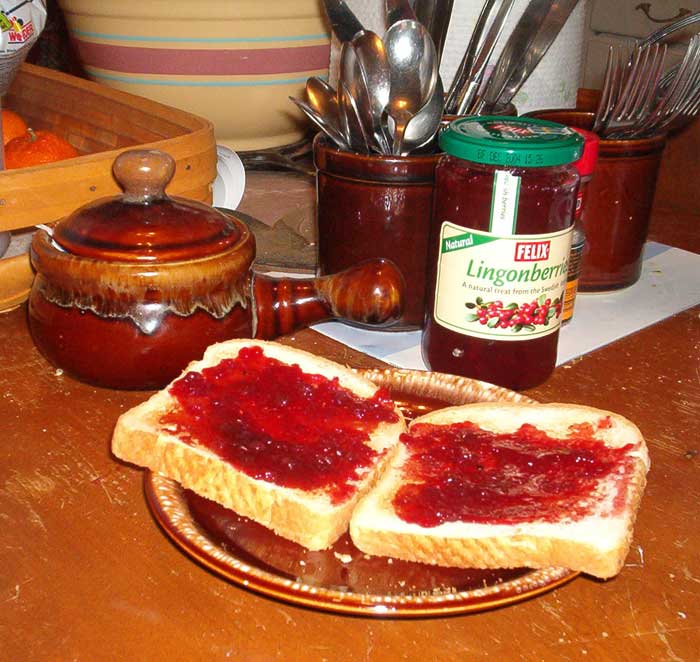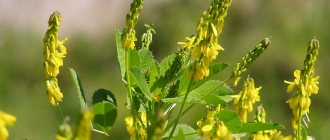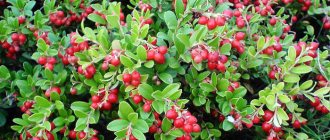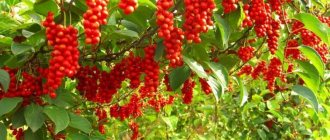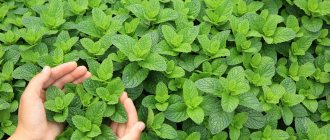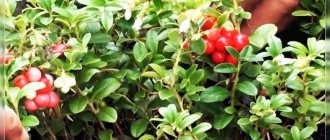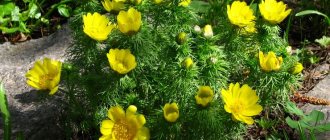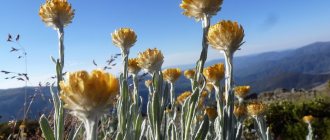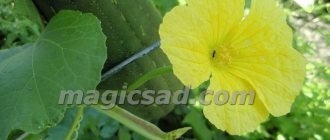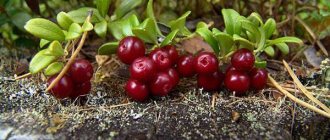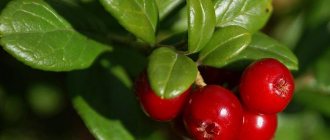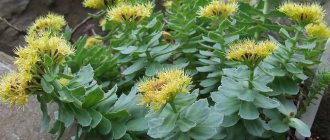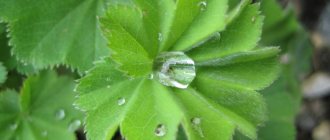Lingonberry garden - planting and care
Planting lingonberries
When choosing a place and soil for planting, you must remember about important factors. Lingonberry is photophilous, which means that the site should be well lit. In the shade, the plant will suffer, bloom poorly, which, accordingly, will adversely affect the yield. It is also important to plant shrubs on a flat area. If there are irregularities and depressions at the planting site, then moisture will accumulate there and the soil may freeze. Peat soils are ideal for planting.
Lingonberry garden loves sufficiently acidic soil, therefore it is necessary to create soil acidity from 3.0 to 5.0 pH. A shrub planted in peat soil will grow and bear fruit better. Heavy loams and clayey media are not suitable. It is better to choose places with light sandy loam soil.
You can prepare the composition of the soil yourself. To do this, you need to mix peat, a little sand (5 parts of peat have 2 parts of sand), sawdust, pine needles. Prepare a place on a flat area, for this remove all weeds, dig a piece of land 30 cm deep with a width of 1.5 meters. Add prepared soil there, after which it should be compacted and poured with acidified water (for 3 liters of water, 1 spoon of citric acid). In addition, lingonberries are fertilized with sulfur, 50 grams per 1 sq. meter. As a fertilizer, the plant does not tolerate humus or compost.

Lingonberry, which is planted with ready-made seedlings, is placed according to a 30 to 30 scheme. It is necessary to plant a seedling at a depth of 1.5-2 cm. Then the lingonberry is watered and mulched with sawdust or needles. This mulch will promote soil oxidation, which is beneficial for this plant. Garden lingonberry, planting and care of which is carried out in the spring, planting is also possible in the fall.
It is very convenient to plant a seedling with a ready-made root system, since they are already fully adapted. Transplant into the ground, without destroying the clod of earth in which it is located, so the already strengthened roots will not be damaged. Such plants do not suffer during transplantation.
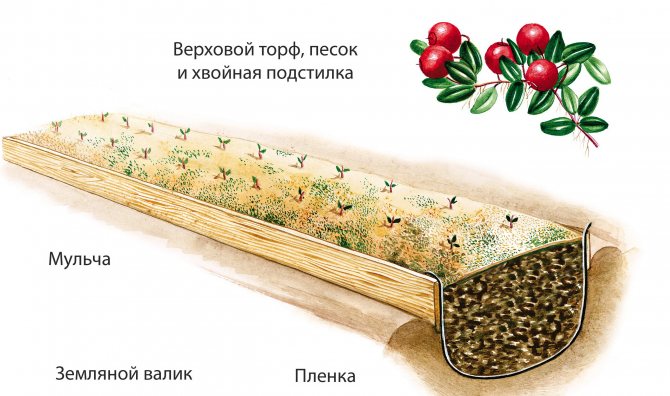

Lingonberry care
It is very important to water the lingonberry, because it is a moisture-loving plant. Watering should be done 2-3 times during the week. Sprinkling is the best option in hot weather. Just like other crops, it must be weeded to remove weeds. Over time, the shrub thickens, so you need to thin out this plant in time (about once every 5 years). From time to time, you should loosen the soil. Lingonberry does not tolerate strong winds, so it is worth taking care to protect the shrub. For this, junipers or pines planted nearby may be suitable. Such protection from the winds will contribute to the good work of pollinators, the site will warm up better, and moisture will not evaporate so quickly. All these factors will have a beneficial effect on ripening, and the berry will delight you with its bountiful harvest.
We also recommend reading
- A beautiful courtyard of a private house with your own hands: everything about the arrangement of the courtyard
- Landscaping of a small summer cottage
Fertilizers
Although the lingonberry bush receives enough minerals, it is still important to use fertilizers to obtain a good harvest. But in no case should large doses be used. Several passes are used when using small doses.Nitrogen fertilizers: urea, ammonium nitrate, ammonium sulfate. Phosphate fertilizers include superphosphate. Potassium fertilizers are also used - potassium sulfate. For lingonberry, it is useful to use trace elements such as manganese, copper, zinc and boron. In the first year of planting a shrub, copper is used.
Mulching
Mulching helps to retain moisture well. As mentioned above, fallen needles, sawdust, straw can be used as mulch. Mulch is laid in a layer 3 cm high. Mulch also helps to effectively fight against overgrowing of the area with weeds.
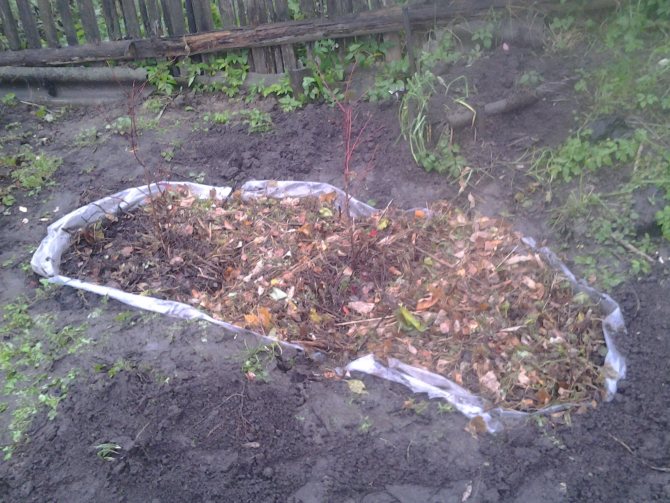

Lingonberry propagation
A good material for expanding lingonberry holdings is cuttings that have been obtained as a result of pruning thickened bushes. Cuttings are cut from the woody parts of the stem. The length of the cutting should be about 8 cm. We plant the finished cutting in peat-sandy soil, leaving three buds on the surface. After two years, the cuttings will harden well and can be planted in open ground in your area. The next year after planting, you can get a harvest.
The most guaranteed option would be to buy ready-made seedlings from the nursery.
Seed propagation is also possible. To do this, it is necessary to collect seeds from a well-ripe berry and plant it in the ground in winter. A strong and healthy seedling will be ready by spring. But the germination rate with this type of reproduction is up to 50% and no more.
But you can use such an interesting approach. We take a very ripe berry and place it in the refrigerator for 4 months. Then we plant it in prepared soil (a mixture of sand and peat). After a couple of weeks, you can see the first shoots. After another three weeks, the seedlings are ready for transplanting into open ground.
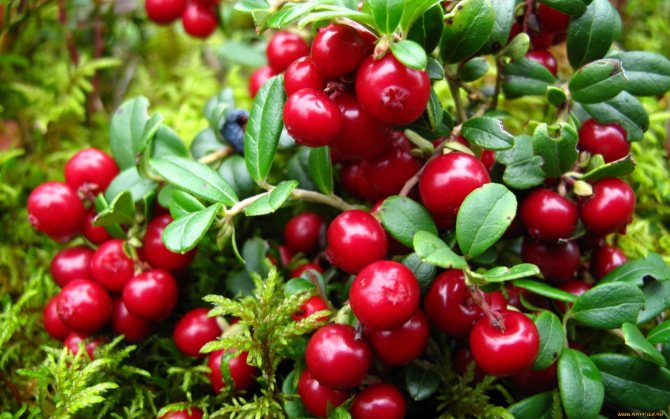

Some diseases can be observed in lingonberry bushes. The affected plant has very small leaves and very few flowers on such a bush. You can only avoid such a problem in your garden by carefully choosing seedlings. If you notice small leaves on the planting material, refuse to plant them. It is impossible to get rid of this kind of disease; you will have to completely remove the affected bushes from the site. Insects such as leafworms are also possible. They eat the buds, thereby destroying the flowers and ovaries of berries. In the fight against these insects, a solution of Bordeaux liquid helps.
Growing lingonberries is not so difficult if you remember the rules for caring for it. It will bring a lot of joy, and most importantly, health benefits.
Berry places of the Moscow region
Where does lingonberry grow in the Moscow region? In general, the vast forests of these places are very rich in a variety of varieties of berries: blueberries, cranberries, raspberries, strawberries, etc. And lingonberries have settled well here.
This is not surprising at all, due to the fact that the southern spurs of the northern taiga reach here from the north, and the northern border of the southern oak forests is located in the south. It is at the junction of the borders of deciduous and coniferous forests that a diverse berry flora has found its refuge.
Favorite places for lingonberries are moss, peat bogs and heavily swampy pine forests. Basically, these are the territories of the floodplains of the Suloti and Dubna rivers, as well as Meshchera in the area of Shatura.
In addition, lingonberries grow in other areas around water bodies overgrown with peat. These are the Krugloye and Trostenskoe lakes in the Lotoshino region.
In the above-mentioned places, usually from one hectare of swamp with cranberries, up to a ton of berries can be harvested per year. Moreover, the fruits are harvested in three periods: September, the beginning of freeze-up, early spring (April). Lingonberries are perfectly preserved throughout the winter.
This amazing berry, as noted above, prefers drier pine forests, burnt-out areas, clearings and lighted edges.Therefore, the following forest areas of the Moscow region are very rich in these berries: northern regions - Zagorsk region; eastern - Noginsky, Orekhovo-Zuevsky and Kurovskoy; western - Volokolamsky, etc.
For example, it can be found both on very dry, including stony and sandy loam soils in the tundra and on the coasts of the Arctic islands, as well as on swamps and peat bogs.
In the mountains and on the coast, lingonberry can grow abundantly on bare rocky slopes, on which there are no other plants. In the forests, its bushes often grow on old stumps and fallen tree trunks.
All this means that you can find lingonberries in a variety of types of forests and tundra. These can be light pine and birch forests, extensive riverine slopes, hills in the tundra, taiga clearings, swamps with well-drained areas.
For example, if cranberries are more common in swamps and damp groves, lingonberries are more active in filling areas in dry forests, clearings and old burnt-out areas with dry soil. Also, blueberries grow in large quantities in dense dark coniferous forests, and lingonberries tend to light pine forests. Unlike bearberry, lingonberry is easier to tolerate being adjacent to other herbs, including very dense ones.
In general, sparse deciduous and coniferous forests with low anthropogenic pressure are the most typical places for collecting lingonberries. Its thickets are most productive in pine forests - lingonberry-heather, blueberry, sedge-grass - and in birch forests. In spruce forests, it occurs with the same frequency, but produces fewer berries due to the stronger shade.
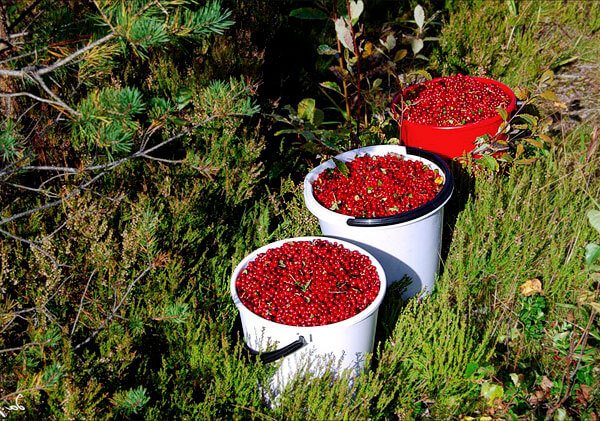

Where the picker enters a lingonberry meadow, he can pick a large number of berries very quickly without significant transitions.
In peat bogs and bogs, lingonberries bear fruit much weaker than on dry soils. For this reason, it is better to choose places far from swamps to collect it.
In the Moscow region, lingonberries are harvested in the conifers of the Shatursky, Volokolamsky and Noginsky districts, some lingonberries were found in the Yegoryevsky district. Also, many collectors know little-known places (which they prefer not to talk about), mainly located in the eastern districts of the Moscow region, but it is impractical to look for them on their own - it will take a lot of time and effort.
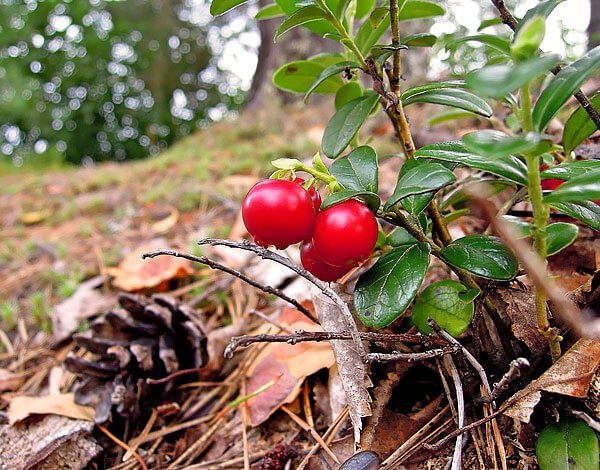

In most areas of the Moscow region, lingonberry grows in very sparse populations, where it is almost impossible to collect it in large quantities.
Lingonberry varieties
Thanks to the efforts of breeders, more than 20 different types of lingonberries have been bred. As with other berries, there are remontant varieties in the ranks of the lingonberry bush. They delight gardeners with generous harvests.
Lingonberry "Coral"
The homeland of this variety is Holland. The bush is in the form of a ball, up to 30 cm high. It begins to yield from the second year after planting. During the season, it blooms and bears crops twice, in July and September, September accounts for most of the harvest.
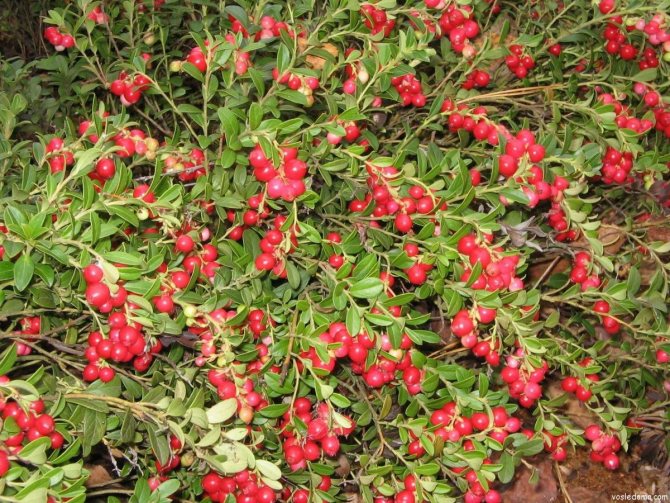

"Ruby"
This variety is good because it withstands spring frosts down to -3. In winter, it tolerates frosts down to -30. It gives a very bountiful harvest, and the berries are rather large, weighing about 220 mg, dark red in color, taste sweet and sour. Leaves are smooth, leathery. Flowers are white.
"Red Perl"
The height of this shrub is about 25 cm. It bears fruit twice a season. The berries are round, dark red in color.


"Sanna"
Originally from Sweden. It has rather large berries, up to 400 mg, and about 300 g of berries can be harvested from one bush.
"Mazovia"
Refers to undersized, up to 20 cm in height. Harvest up to 40 g per bush. The berries are delicious, dark red.
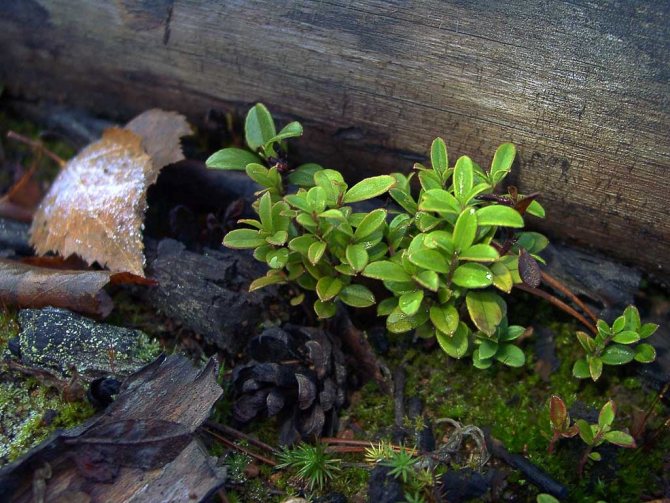

"Kostroma pink"
The plant reaches a height of 15 cm. It begins to produce crops in mid-August, the berries are pink. Frost-resistant, survives up to -33, and in the absence of snow cover, up to -15.
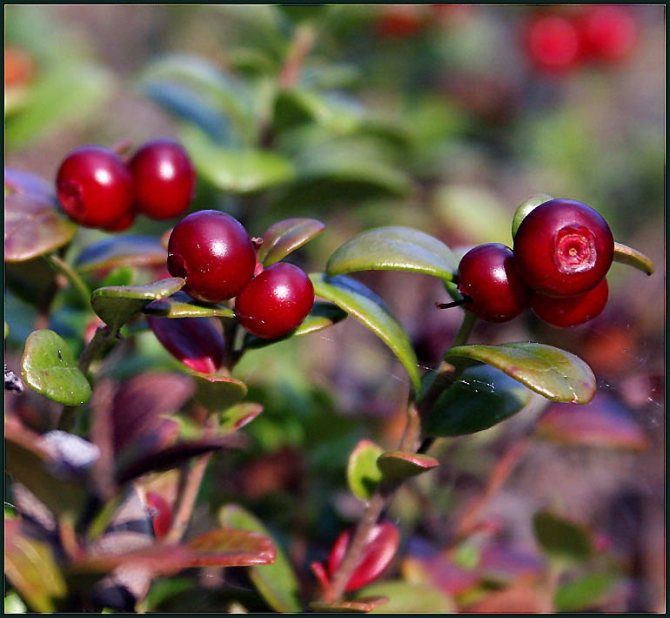

Where grows
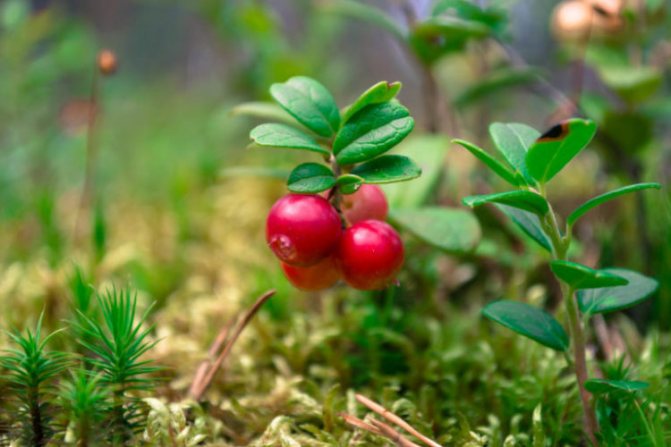

Lingonberry grows in the forest zone of the temperate zone.In the wild, it is found in the tundra, forests, peat bogs, in mountainous areas. Lingonberry grows in central Russia, Siberia, the Far East and the Caucasus.
In the middle of the 18th century, the first attempts were made to cultivate the plant, and only in the 60s of the 20th century the first lingonberry plantations appeared in the USA, Sweden, Poland, Holland and the Federal Republic of Germany. Since the 80s, lingonberry has been cultivated in Russia, Belarus and Lithuania. The plantation yield is 20-30 times higher than in the wild.
Medicinal and culinary uses of the plant
From the lingonberry bush, both berries and leaves are used. It is full of the most valuable elements for human health. The berries contain vitamins of group B, also PP, A, E, and C. It contains tannins, carotene, carbohydrates, organic acids such as salicylic, malic, citric. Rich in minerals: iron, zinc, manganese, phosphorus, potassium, calcium. One hundred grams of berries contains up to 46 kcal.
Berries containing chromium, copper, mineral salts help in the fight against vascular atherosclerosis, ischemic disease, diabetes mellitus. Improves the digestive tract, with low acidity.
This valuable berry is successful in the treatment of kidneys and bladder. It also has antipyretic, antiseptic, antimicrobial, wound healing, tonic and antimicrobial effects. For viral diseases, gargling is used, as well as tea made from berries.
Chemical composition
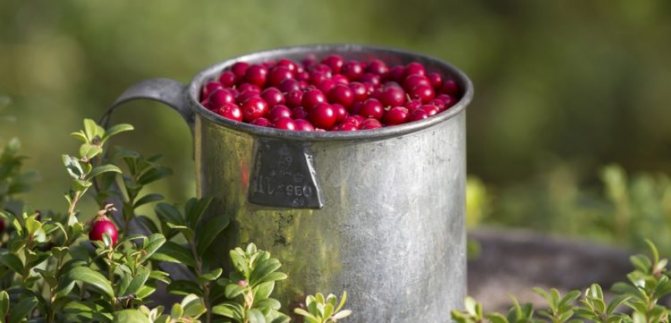

Calorie table of lingonberries, depending on the cooking method, per 100 grams of product:
| Product | Calories, in kcal |
| Calorie content of fresh lingonberry | 43,0 |
| Soaked | 24,0 |
| Jam | 250,0 |
| Morse | 41,0 |
| Jam | 244,0 |
IN lingonberry chemical composition includes trace elements such as calcium, potassium, magnesium, iron, phosphorus.
- Calcium salts. Necessary for the implementation of metabolic processes, as well as the normal growth of skeletal bones. With a deficiency in the body, its replenishment occurs due to large joints, teeth and nails.
- Phosphorus. This element in the body should be twice as much as calcium. It also helps prevent diseases of the joints, bones, and reduce the likelihood of fractures.
- Potassium. When treating arthritis and gout, it is recommended to increase water intake to 2 - 2.5 liters per day. Potassium, which is necessary for normal muscle function, including the heart, will also be flushed out of the body in increased volumes. In addition, potassium is necessary for the utilization of sodium from the body, which leads to a decrease in tissue swelling.
- Magnesium salts. They have an antiseptic effect, which is necessary to reduce inflammation in the affected joints and around the joint tissues.
- Iron salts. They participate in the evacuation of oxygen from the lungs to the joints and around the articular tissues for carrying out redox reactions. With a lack of iron salts in the body, the lack of oxygen will increase.
The chemical composition of lingonberry also includes vitamins:
- vitamin C
- riboflavin
- vitamin B2
- carotene
- as well as organic benzoic acid (a natural preservative that ensures long-term storage of lingonberries).
Vitamin C. The importance of redox processes in the body was mentioned earlier. In their implementation, ascorbic acid plays a major role.
This vitamin is necessary for the formation of collagen, which is responsible for the elasticity of the skin, restoration and strengthening of tissue cells of blood vessels, gums, teeth, bones. The human body cannot synthesize ascorbic acid. This vitamin must be included in food on a daily basis.
Vitamin B2 - riboflavin, as it is also called "skin vitamin". Japanese scientist K. Nishi said that the indicator of health is the condition of the skin. If there is enough riboflavin in the body, the person's skin is smooth. Lack of vitamin B2 leads to disorders of the nervous system, gastrointestinal tract, decreased resistance to infections, including skin infections.
Carotene - the so-called provitamin A - participates in the formation of retinol - vitamin A in the human body. With its lack, hair begins to fall out, and vision deteriorates.
Harvesting and storage
Lingonberry leaves can be collected only before flowering (April-May), and only those leaves that have survived the winter should be selected. Young leaves are not suitable for drying, they will turn black. Or, harvesting the leaves can be postponed until autumn, when the flowering ends. Only after 5-10 years can the next collection of leaves be carried out. The leaves should be spread out in a thin layer and dried in a dark, well-ventilated area, stirring occasionally. Correctly dried leaves do not turn black, but retain their green color.
The berries are picked well-ripe, remove any debris, wash. Further, they use many methods of storage in the winter. Dried, boiled preserves and jams, frozen in the freezer. All vitamins are preserved when frozen. But it is worth remembering that when freezing, it is important to use sealed bags, otherwise extraneous odors will pass to the berries.
Delicious jams and preserves come out of lingonberries. Lingonberry sauce is also made from it, which is served with meat dishes. Thanks to it, the taste of the dish is enhanced, as well as the digestibility is improved.
So, lingonberry, the cultivation of which is quite an easy task, is a very valuable plant. This shrub is not only a good decoration for your garden, but also a storehouse of vitamins that will help you stay healthy.
How to collect
Medicinal raw materials are harvested twice a year: in spring before flowering and in autumn after harvest. Leaves are plucked or cut along with the shoots.
Lingonberry has the ability to accumulate harmful substances, therefore, it is collected away from industrial facilities, roads and cemeteries.
Raw materials are dried in a ventilated room or under a canopy at a temperature not exceeding 40 degrees. An electric dryer can be used. The finished raw materials are stored for about 3 years in a dry and ventilated place.
Lingonberry sauce for the winter
Composition (for 0.5 l):
- lingonberry - 0.5 kg;
- sugar - 0.25 kg;
- universal seasoning - 5 g;
- cloves - 6 pcs.;
- juniper berries - 6 pcs.;
- hot chilli pepper - 1 pc.;
- balsamic vinegar - 80 ml;
- salt, pepper mixture - to taste.
Cooking method:
- Sort out and rinse the lingonberries thoroughly. Let it dry. To make this happen faster, lay it out on a napkin that will absorb excess moisture.
- Place clean, dry berries in an enamel bowl or saucepan. Cover with sugar and remember with a spoon to let the berry juice.
- Place a saucepan with lingonberries over low heat. Cook it, stirring occasionally, for 10 minutes.
- Remove the pan from heat and leave to cool.
- Wash small glass jars with baking soda, for which you have suitable sealed lids.
- Sterilize them over steam or in the oven for 10 minutes.
- Rub the sauce through a sieve.
- Wash the pepper and remove the seeds. Grind with a blender. Mix with lingonberry puree. Keep in mind that the pepper will give the sauce a hot taste, so you shouldn't add a lot of it. If you are not very fond of spicy dishes, reduce the amount of this component by half, but do not exclude it altogether, since without it the sauce will be poorly stored: hot peppers are a natural preservative.
- Make a spice sachet. To do this, you can either fold them into a cloth bag, or wrap them tightly in gauze. Dip the sachet into a bowl of lingonberry puree. Season to taste. Pour in the balsamic vinegar.
- Place the sauce on the stove. Cook, stirring occasionally, for 10 minutes. Take out the spice sachet.
- Pour the sauce hot into sterilized jars, seal them with metal lids.
- Turn over, cover with something warm, and leave to cool.
Lingonberry sauce can be stored at room temperature, but an open jar must be moved to the refrigerator and its contents must be eaten within 2 weeks.
Lingonberry sauce goes well with meat. You can prepare it in different ways. If you like the taste of the sauce, you can prepare it for the winter.
Watering
It is preferable to provide regular watering, and even better with rainwater to reduce carbonate content. It is necessary to add acid to the irrigation water on a weekly basis, add sour peat, sawdust and pine litter in the form of a mulch layer in spring and autumn.
It has been noticed that sprinkling irrigation is less favorable than drip irrigation. Apparently, for their survival, heathers and lingonberries actively grow useful fungi in the root zone, and sprinkling from above causes damage to the upper part of the plants by parasitic fungi.
Description
Lingonberry is an evergreen half-shrub of the lingonberry family, it reaches a height of 20-25 cm, has regular, leathery, thick, wintering leaves. Lingonberry flowers are very small, bell-shaped, white-pink in color with a pleasant faint smell. The fruits have a regular spherical shape, reaching 8 mm in diameter. The berries are bright red with a shiny glossy surface.
Lingonberries ripen around the beginning of September, but even unripe fruits can be made to turn red, for this the berries are placed with red aromatic fruits and red tomatoes, they release ethylene, this gas stimulates the reddening of lingonberries.
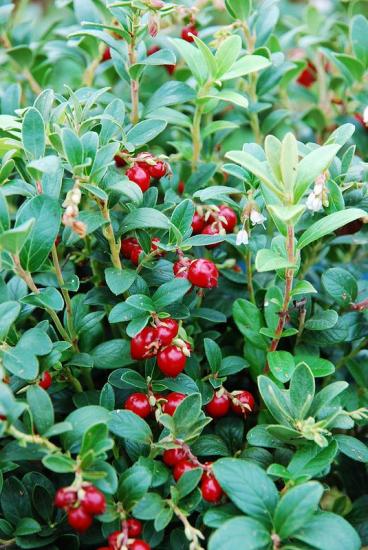

Semi-shrubs are long-livers, forming a clan underground from the roots of several lingonberry plants; they can live for more than two centuries. The population is regularly updated, new bushes appear, and old ones die off. Where the lingonberry grows separately, without a clan, its bush will not live very long - no more than 10 years.
Contraindications for use
There are certain contraindications to the use of lingonberry berries and preparations with its addition. Before using the medication, you should carefully study this information and possible side effects. It is not recommended to use lingonberry for people with kidney problems, hypotension and cholecystitis. Hypersensitive patients should also refrain from taking medications based on the medicinal plant.
It is recommended to start using lingonberries with small doses. If the general state of health does not deteriorate, then you can safely increase the dosage.
Soil preparation
You can grow lingonberries in personal plots in the same way as garden blueberries. For this, an acidic soil environment is prepared, and several bushes are planted in the planting pit. The land for each plot must be prepared as follows:


- Removable on a shovel bayonet 1 square meter of the top layer;
- On an oilcloth or in a stretcher, this layer is mixed with ginger sour peat and sand;
- The prepared mixture is poured into the hole, then trampled down and well moistened.

